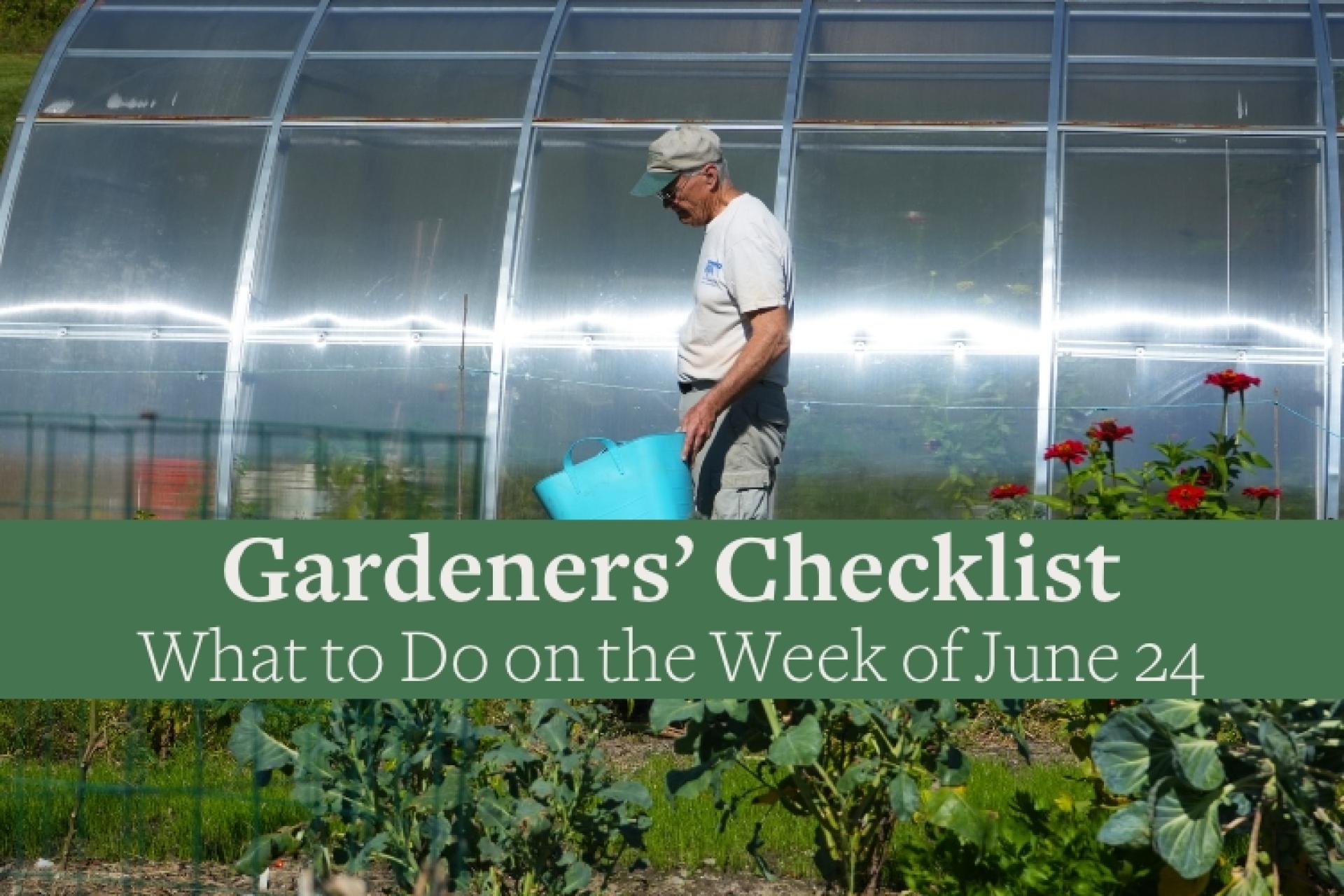You are here
Gardeners Checklist: Here Is What to Do on the Week of June 24
Gardeners Checklist: Here Is What to Do on the Week of June 24
By Ron Kujawski
* Harvest blueberries when they have developed their full color and easily break free from the cluster when rolled between thumb and palm. Leave berries that are red-tinged on the plant to ripen since blueberries do not ripen further after being picked. Do not wash harvested berries until ready to use. That also goes for berries that will be frozen. Having blueberry varieties with different maturation dates will allow for picking well into August.
* Pick peas regularly. Don’t worry if you pick a few pods with underdeveloped peas. It’s better to pick them a little immature than over-developed. If there are some large, over-developed pods, pick them even if they have to be thrown away. Leaving them will result in the pea plants stopping production of more pods.
* Apply kaolin clay (a natural mineral product sold as Surround WP) to cucumbers, melons, squash, and pumpkins to control the striped cucumber beetle. This pest is particularly troublesome since it transmits the bacteria which cause bacterial wilt disease of these crops.
* Continue to plant succession crops of summer squash, sweet corn, beans, beets, carrots, cucumbers, and leafy greens, including arugula, kale, mustard, Swiss chard and leaf lettuce. Leaf lettuce planted now will benefit from some shade, as between rows of corn or tomatoes, and lots of water.
* Don’t hesitate to plant container-grown or balled-and-burlapped trees and shrubs now. On the other hand, do not dig and transplant woody plants at this time of year.
* Leave lawn clippings on the lawn. As clippings decompose, they release nutrients for grass growth. If clumps of clippings occur during mowing (usually the result of letting grass get too high before mowing or when cutting wet grass), gather the clippings when dry and use them as mulch in flower borders. Roses especially respond well to a mulch of grass clippings.
*
“Should I sucker my tomatoes?” That’s a question I’m often asked and my answer is always an unequivocal “maybe”. I grow most of my tomatoes in cages and I don’t do much suckering. Suckering, or removal of side shoots, has the advantage of speeding up fruit development on tomatoes. That’s because more of the plant’s food reserves go to fruit ripening than to new shoot development. However, by not suckering I get more stems and more fruit but at a later date. My tomatoes that are staked require the most suckering since only one or two stems are allowed to develop. I always remove suckers or side shoots that occur below the first flower cluster on the main stem. Further suckering depends largely on the type of tomato grown. Determinant types such as ‘Early Girl’ grow as bushy, compact plants with little or no new growth after the fruit matures. They don’t need any further suckering. On the other hand, indeterminate types such as beefsteak varieties continue to produce new shoots throughout their life and need constant suckering. Usually these types are trained to just one, two, or three main stems.
Ron Kujawski began gardening at an early age on his family's onion farm in upstate New York. Although now retired, he spent most of his career teaching at the UMass Extension Service. He serves on Berkshire Botanical Garden’s Horticulture Advisory Committee. His book, Week-by-Week Vegetable Gardener’s Handbook, is available here.
Help Our Garden Grow!
Your donation helps us to educate and inspire visitors of all ages on the art and science of gardening and the preservation of our environment.
All Donations are 100 percent tax deductible.


